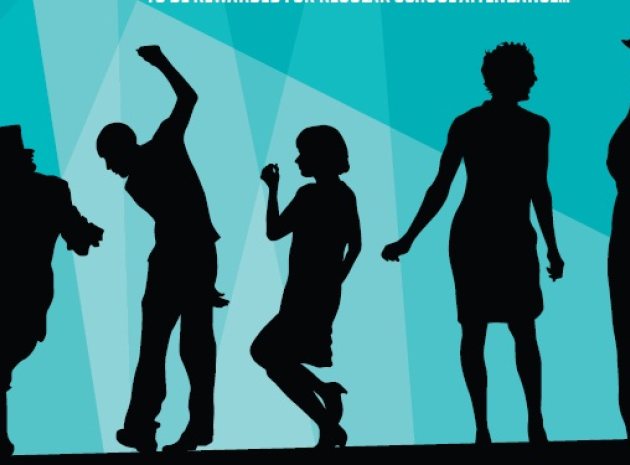Dr Nicola Davies challenges the sidelining of performing arts - dance, drama, choreography, and music - and explores how these subjects can benefit all students across the curriculum…
“There isn’t an education system on the planet that teaches dance every day to children the way we teach them mathematics. Why?” asks Ken Robinson, author and educator, in his 2006 lecture How Schools Kill Creativity. Eight years on, this remains a pressing question. In 2012, Michael Gove, British Conservative Party politician and Member of Parliament for Surrey Heath, announced that schools should be evaluated in terms of their performance in English Baccalaureate (EBacc) subjects. In response to this, many schools marginalised performing arts curriculum by placing the subject in after-school study slots. Indeed, Ipsos MORI research commissioned by The Department for Education revealed an overall 27 percent withdrawal of the performing arts subjects from schools throughout the country. Furthermore, a report by the Business and Technology Education Council (2012) highlighted that the most commonly withdrawn subjects from the UK school curriculum were drama and performance arts. Based on the results of the Ipsos MORI research, it is safe to say that the decision to leave the performing arts out of EBacc is the main reason for the subject being sidelined. The leading UK professional association for drama and theatre educators, National Drama, has been involved in drawing up programmes of study for English courses – but these programmes have been axed in many schools due to decisions to remove drama from English courses. It can be presumed that, for many, the understanding of drama in schools doesn’t extend beyond performing plays, reciting Shakespeare, and providing a way for students to avoid academic study. Consequently, some educators believe the future of performing arts is bleak and, according to the Ipsos MORI report, teachers are experiencing high levels of uncertainty about the future and importance of the performing arts. “There aren’t enough courses in our school curriculum that allow our students to express their creativity,” says Marisa Bloomington, a Kent-based secondary school teacher of twelve years. “The only time students are really able to express themselves creatively is in art or drama classes, which in many cases only function during certain parts of the day or even the week.”
What a performance
Fortunately, not all performing arts subjects are on the back burner. For example, theatre as a subject continues to flourish in schools across the country and many UK schools have thriving performing arts departments with specialised accommodation and at least one expert drama teacher. Furthermore, it is a requirement of the OCR syllabus that students have access to professional performing arts organisations during their period of study. The benefits to be derived from including performance in the curriculum are evident within the research. In particular, performing arts maintain a significant role in the personal development of adolescents. The skills and qualities attained by students, such as teamwork, creativity, and risk-taking, are essential assets that can be used in most areas of life. Drama teacher Louise Wallace says, “I passionately believe in the power of drama as a learning tool and its importance within a wide curriculum that seeks to educate the whole person, providing them with the skills they will need in their adult life.” She adds, “I remember acting in a play on my very first day at school, at the tender age of three and a half! The subject was a fairy tale and I suspect many of my students will tell you that this experience must have inspired my lifelong love of storytelling in all its forms. The experience of working with others and of creating something unique has certainly shaped the way I teach and live.” Sustained student involvement in performing arts, such as participating in drama clubs or acting in plays or musicals, is associated with advancements in reading proficiency, higher levels of empathy and tolerance for other students, improved maths and cognitive ability, critical thinking, and verbal skills. Students can also experience improved motivation and concentration through performance. Various case studies have shown that schools with well-developed programs in arts education have many positive outcomes for students, such as an increased sense of enjoyment and achievement (regardless of academic ability), as well as stress relief. Other positive effects are increased knowledge of social and cultural issues, and enhanced expressive skills. It has also been found that students who study the arts are four-times more likely to be recognised for academic achievement and three-times more likely to be awarded for regular school attendance. Drama, in particular, stimulates students’ imagination and enables them to explore various topics and experiences in a safe and supportive environment. Katie McCullough, director of the filmmaker consultancy, Festival Formula, says, “Drama allows every student to be expressive, it breaks down barriers, encourages confidence, allows young people to explore issues that affect them, and tackle problems in a creative way. It promotes team work in a non-aggressive, non-competitive way, allowing people to explore their individual strengths and weaknesses. It instils discipline and encourages students to question and probe whilst giving them the skills to present themselves articulately.”
Innovation across the curriculum
Activities related to the performing arts can be integrated into many areas of the curriculum - whether it is a formally scripted and rehearsed skit, an activity used to practise dance techniques, or theatrics that encourage students to think outside the box. Teachers can conjoin performance with standard curricula to create a richer learning experience for their students. “I teach history, often categorised as boring, and I incorporate dramatics, such as role playing, in lessons. Over time, I can notice a positive change in the attention span of some students,” says Bloomington. Integrating performing arts into standard subjects goes beyond plays and skits; it is a teaching strategy that seamlessly intertwines arts standards with core curricula in order to develop connections and administer engaging context. For instance, in a science course, students could engage in choreography - a dance using locomotion and non-locomotion movements - to exhibit their understanding of rotation versus revolution of the planets. Teachers don’t have to be artistic in order to integrate the performing arts into core subjects - just leaving students to lead the creativity is often enough.
What’s in it for them?
Louise Wallace did some market research with ex-students, just to see if her feelings about the transforming power of drama and the theatre were shared. She asked: What did drama do for you at school?; and, Why should we still teach drama?
- She received the following responses:
- Drama was a place where things weren’t ‘right’ or ‘wrong’ and the phrase “fantastic flop” was not a criticism and “safe success” was.
- It was one of the only classes you could make mistakes and that was OK.
- Drama meant making yourself vulnerable in many ways because for the majority of it you weren’t just writing an essay, which only your teacher would read - you were trialling things in front of peers
- Peer interaction means you have to rely on people you are working with, plan things, and work outside of the class together; not many subjects give this opportunity.
Putting it on
Planning a play or skit encourages interaction between teachers, students, and parents. It also stimulates a sense of excitement. When planning, there are some basic principles to be followed. The activity could be spread over several weeks, eventually leading to a stage performance of some, or all, of the pieces composed. It’s ideal for students to have computer access in order to compose and revise their scripts.
- The basic structure in planning a play or skit is:
- Timing – Ideally, set times of five to ten minute pieces in terms of length.
- Initial ideas – Have students come up with a basic idea for the script. The basic theme or idea may develop from ongoing work.
- Developing plot – When students have chosen a basic idea, they need to outline and develop the plot.
- Developing characters – Students should write a brief description of the characters in their play or skit.
- Equipment – Performances can be enhanced by access to a basic lighting rig. Even better is to have a sound desk as well. At the very minimum, you will need modular staging, unless you are fortunate enough to be a new-build with dedicated theatre space.
It can be a challenging task prepping for a student performance. Ideally, start with two rehearsals per week, ranging from two to three hours per rehearsal. Rehearsals are essential so ensure you schedule around the cast. Make it clear to the cast and their families that you might need to revise the rehearsal schedule, but always give advanced notice when you do. When setting performance dates and times also check for a venue to use if the performance is not taking place at school. Whatever venue, make sure to secure reservations well in advance, especially dress rehearsals.
About the Author
Nicola Davies is a psychologist and freelance writer with a passion for education. You can follow her on Twitter (@healthpsychuk) or sign up to her free blog: http:healthpsychologyconsultancy.wordpress.com/










